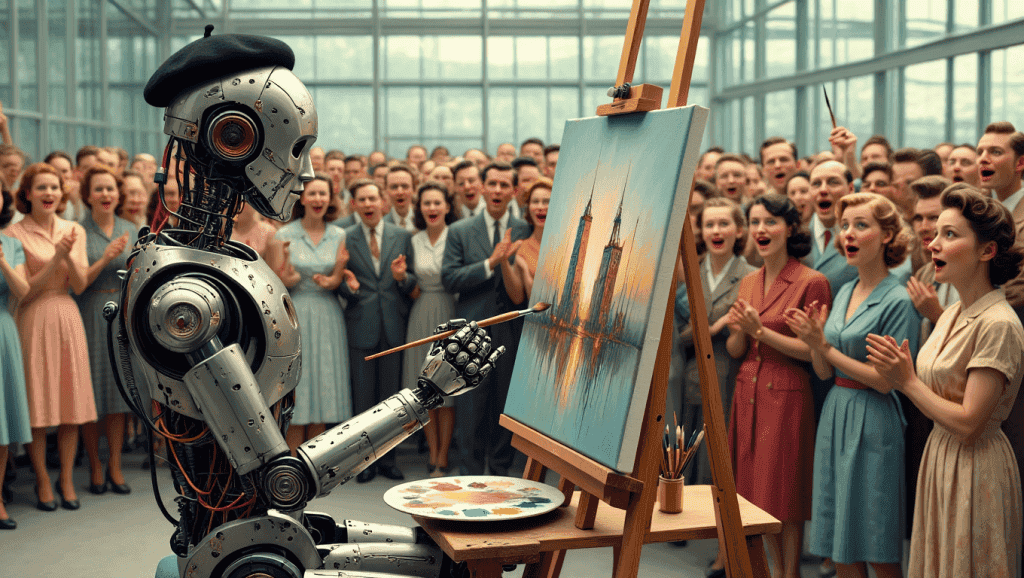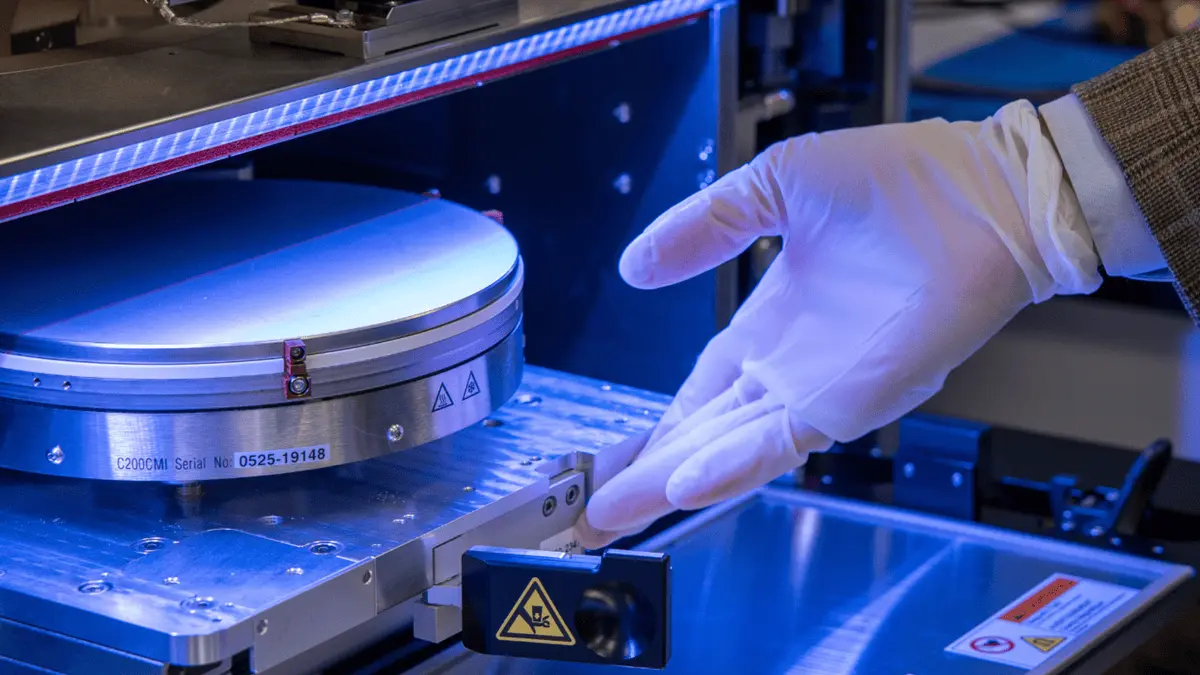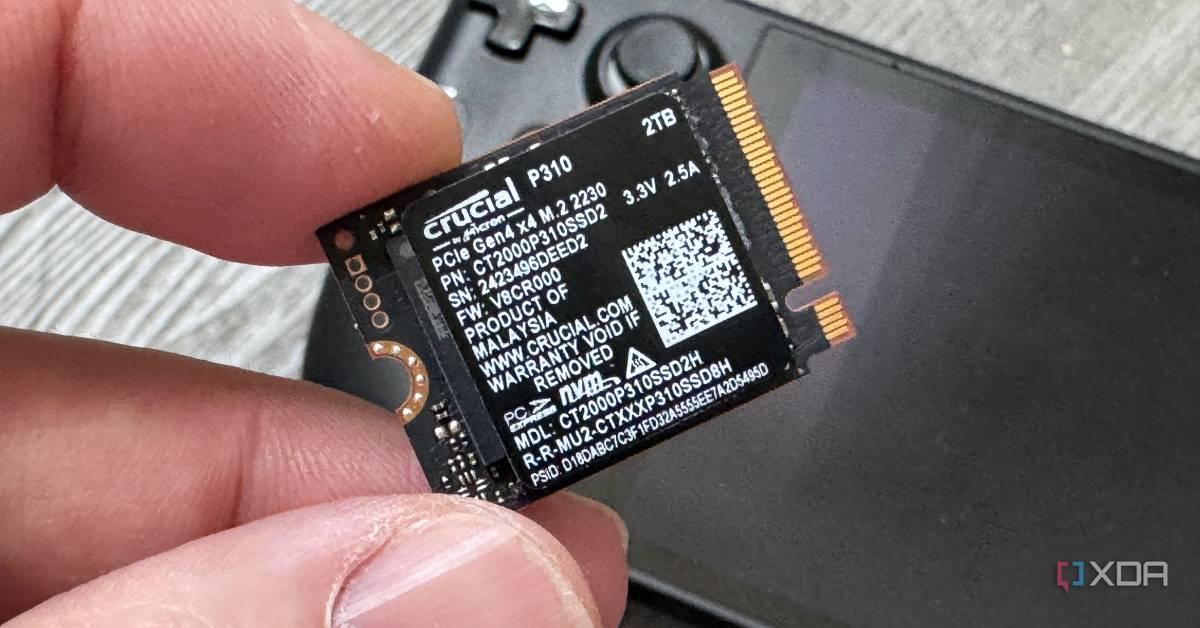Freepik: The All-in-One AI Creative Suite Revolutionizing Digital Content Creation
2 Sources
2 Sources
[1]
Freepik Review: A Swiss Army Knife of the Best AI Art Tools -- For Cheap - Decrypt
While countless companies fight for your AI subscription dollars, one platform has quietly scooped up nearly every major AI image and video model available today. Freepik -- yes, that stock image site you've probably used before -- has transformed itself into a creative Swiss Army knife that might just save you hundreds in fees. Despite its name, Freepik is not free. But its subscription proposition is reasonable: Why pay $240 annually for ChatGPT, $144 for Runway, $96 for MidJourney, $219 for Eleven Labs and several more subscriptions when Freepik bundles them all together for significantly less -- starting at around $69 a year. Digital creators have been juggling multiple AI tools, burning cash and time switching between platforms -- and that's the problem Freepik is trying to solve. "When the generative AI trend emerged, we realized we could expand our mission," Joaquin Cuenca, Freepik's CEO, told Decrypt. "Now, instead of just offering stock content, we adapt to what our users need, letting them make something unique." "The core business is the same -- helping creators make great designs. It's just the 'how' that we changed," he said. Freepik serves over 60 million visitors a month, including cinematographers, artists, designers, but also a growing community of amateur creators and AI enthusiasts that joined the platform because it gives them everything they want to try, he said. We put the service through its paces to see if it's as good as the buzz claims. TL;DR It is. Freepik's approach directly addresses a persistent pain point for content creators who have traditionally been forced to maintain multiple subscriptions across various platforms to access the full spectrum of AI capabilities. The platform is robust, but it has so many options that it might be overwhelming for newcomers. It is an all-in-one hub that requires a bit of familiarization for users to feel comfortable. The front site alone has 9 menus, with dozens of submenus, offering a lot to explore and work through. For this review, we focused on the AI features and will only briefly mention some of the more important non-AI tools. Image Generation The platform offers an impressive array of image generation capabilities through multiple distinct models, including state-of-the-art models like Google's Imagen 3, Flux 1.1, and Ideogram. The platform lacks support for other closed-source models like ChatGPT's new image generator, Reve, Recraft, MidJourney, and SD3.5 Large, which, despite not being as good as Flux, is also a reference in the open-source community. Nonetheless, Freepik Mystic produces images on par with MidJourney and the rest of the best models in the market. Mystic 2.5, Freepik's homegrown version of Flux 1.1, demonstrates particular strength in creative interpretation and unexpected composition. During testing, it consistently produced more varied camera angles and dynamic poses than other models like Ideogram or Imagen3, transforming identical prompts into distinctly different visual interpretations. Mystic's strong point is not prompt adherence, yet it still produces especially beautiful, creative, and realistic images. Google's Imagen 3 sits at the opposite end of the spectrum, with great prompt coherence and precise detail rendering but poor text generation (meaning words are misspelled or outright gibberish). When provided with complex prompts containing multiple specific elements, Imagen 3 reliably captured each component. This precision makes it particularly valuable for users requiring exact visualization of specific concepts in a single shot. The pure Flux 1.1 occupies a middle ground, offering highly customizable outputs with good enough style transfer capabilities. While perhaps not matching Imagen 3's precision or Mystic's creative flair, its flexibility and trainability make it well suited for users seeking to develop consistent branded visual styles. It is also the cheapest one in terms of credits per generation. Ideogram rounds out the image generation offerings with particular strength in incorporating text elements into images. This specialization makes it great for creating marketing materials, information graphics, or any content where readable text integration is critical. Until the arrival of ChatGPT's new model, this was the king for long text generation. Also, this model is likely to be updated, since Ideogram 3.0 was released last week. The platform also offers an AI prompt enhancer to add details and elements to a basic prompt, a color palette picker, a style picker with different framing and lighting options, and a set of premade characters for users requiring consistency in subjects. It also supports LoRA training -- basically a small but highly specific model trained for custom tasks -- giving users the possibility of generating images of a specific subject, a custom style, or a unique concept. The "Reimagine" feature is also interesting for those willing to explore ideas. Users can upload images or prompts, and Freepik will spit out dozens of quick images in seconds with different approaches to the original, so the user can pick one and then iterate on it, dedicating more compute to generate a more detailed and better quality piece. It also has a sketch mode, which instantly transforms any scribble into whatever the user prompts. It works almost instantly, and is similar to the "live painting" tool that the generative AI plugin Krita offers -- or one of the old GauGAN landscape generators that Nvidia built before generative AI was cool. This draft tool is great for quick sketches and situations in which a few strokes are enough to understand a concept -- for example, the process of drafting a movie script, or sketching the idea of a city landscape. Beyond image generation, Freepik is also known for its Magnific AI. The upscaling model is a creative enhancement technology that goes beyond simply increasing resolution to actively enhance image details with remarkable fidelity. Unlike conventional upscalers that rely on interpolating existing pixels, Magnific intelligently adds texture and detail to enhance the original image. Our tests showed the "subtle" setting works best for realism, adding texture and detail without weird glitches. Cranking up the creativity settings sometimes results in oddities, but the built-in retouching tools make fixes easy. The aggressive options actually work well for nature scenes where exact matching isn't crucial -- for example, upscaling a forest can benefit from some creative interpretation, but faces need to actually look like faces. The real value here is having multiple AI models in one place. You can use each for what it does best: Mystic for creative exploration, Imagen 3 for precision work, and Ideogram for text integration -- all without leaving the platform. Video generation Freepik's video generation toolkit essentially aggregates access to every significant video AI model on the market. The platform supports Minimax (including specialized versions optimized for illustrations and character consistency), Runway, Luma, Dream Machine, Kling 1.6 (including professional tier access), Hunyuan, and PixVerse -- essentially the entire current landscape of SOTA video generation AI. Most notably, Freepik provides access to Google's Veo2, ranked as the most advanced video generation model available today, but geographically restricted in many regions. This inclusion alone represents significant value for creators in areas where direct access to Veo2 would otherwise be impossible. But beware, generations with Veo2 are extremely expensive, costing around twice the credits required by other models such as Kling 1.6 Pro. Testing identical prompts across different video models revealed distinct characteristics that would appeal to different use cases. Minimax's illustration-focused model produced more dynamic and stylized animations, while Kling demonstrated superior lighting effects, realistic physical interactions, and, for some reason, was able to keep the camera steady in one place. Veo2 is very realistic and produces excellent videos -- probably not twice the quality of the other models, but they were good enough for us to crown it as the best video model to date. For a comparison of all the models, check the video below. All used the same prompt and initial frame as reference: While AI capabilities seem to be the cornerstone of Freepik's current value proposition, the platform maintains its origins as a comprehensive design resource hub for artists and designers who don't incorporate AI into their work. Users maintain access to an extensive library of traditional design resources, including: Freepik operates on a tier-based system. Each tier gives users a specific amount of credits that are burned based on use. For example, generating an image will consume fewer credits than generating a video. The free tier allows users to explore the platform's capabilities without financial commitment. However, generations under this license are not allowed to be used commercially. Free accounts can access: For professional or more experienced users requiring greater capacity, paid subscription plans range from around $69 to $294 per year. This pricing positions Freepik favorably against most of its competitors, like Midjourney (which starts at $96 per year), Ideogram (starting at $84 per year), or even Adobe and Shutterstock, whose mid-tier plan costs more while offering substantially less functional diversity and model variety. Rather than forcing users to choose between competing ecosystems or maintain multiple subscriptions, Freepik provides unified access to virtually every major model alongside professional editing capabilities and traditional design resources. For professional creators, this consolidation offers tangible workflow benefits beyond mere convenience. Projects can flow naturally between different AI models based on specific needs, undergo professional refinement within the same environment, and integrate seamlessly with production-ready design elements -- all without the cognitive overhead and financial burden of platform-switching. For amateurs, this gives the chance of having all the latest AI models in one place without paying for specific subscriptions. It's a real Swiss Army knife that is definitely worth trying.
[2]
Tested: the Freepik AI image and video generator is slick and big, and filled with moral dilemmas
Why you can trust Creative Bloq Our expert reviewers spend hours testing and comparing products and services so you can choose the best for you. Find out more about how we test. The stock image service has been a staple of creative workflows all the way back to when Fleet Street was still on Fleet Street, and the ability to obtain illustrative images of just about any subject you can think of has saved many a project from looking dismal. The coming together of stock images and AI image generators was, perhaps, inevitable, and so now we have Freepik. It's a site that, for a monthly fee (though there are free resources), will offer you the ability to generate pictures and videos from text prompts (and you can even expand the prompts with AI too) then generate the results in the cloud before expanding, reimagining, resizing and even relighting, before downloading it to your machine to use in your creative projects. It's not really photo editing software, but a stock site that will always have photos and videos to your specifications. This, to the audience of photographers, designers, sculptors, assorted camera operators and general visual geniuses that reads Creative Bloq, may well sound like heresy. However, this is a review, not an op-ed, so let's see what's on offer, how it works, and what the results look like. As Freepik is a web service that runs in the cloud and which you access through your browser, there's no setup involved beyond creating an account. Ours was upgraded to Premium+ by Freepik for the purposes of this review, but there's a simple enough interface for choosing the level that suits you. Three devices at a time can be logged into one account, which Freepik says is for security reasons but will also prevent everyone in a busy studio from logging into the same subscription. Once you're set up, the Projects screen holds a record of your work, and you can start a new session or continue an old one. While it has had a massive AI makeover, Freepik started as a stock image library and all that's still there, with 247 million assets on the platform according to its creators, covering photos, illustrations, icons, templates, fonts, videos and music. Alongside all this, and the AI image and video generators, there's an editing suite with upscaling and AI tools including object insertion, plus background and face replacement, and it can be used on the stock photos as well as those you've generated yourself. The stock photos are all very nice, but without doubt the major selling point of Freepik is its AI system, which can generate still images and video. The workflow starts with a text prompt, but you can upload a reference image and ask Freepik to incorporate it into your creations too. From here, you can choose the AI engine, with Google Imagen 3, Mystic 2.5 and Flux among the options, with Ideogram in beta. The engine, or Mode, you choose will have a bearing on the final result, but the next option - Style - is where you pick how the image or video will look, with a huge number available to choose from including simple photos and cartoon drawings to images with specific 3D, photographic and painting styles. Once you've generated your image, you can edit and upscale it, with retouching tools too. If it's not quite right, it's possible to 'reimagine' the image by running the same prompt again, but with control over how far the AI engine can deviate from the original. Being specific with your prompt is key to getting what you want, but Freepik can reverse engineer a prompt from an image (though it doesn't always get it right, changing a request for 'futuristic glasses' to 'VR headsets' in one of our runs) then expand it to include more details it has made up. Its image recognition is very good, able to pick up details such as background figures and the type of lighting. You can also play with the background, relight an image, and adjust poses and clothing while keeping the same face - which is important if you're using a reference image. There are a few extra tools that make Freepik more than just a source of images and video. The Mockups section allows you to upload your own images and have them composited on hoodies, business cards and phones, among others. There's also a Designer tool, which offers templates you can populate with your own text and images, before downloading as a PNG or PDF. Despite the huge amount of complexity going on behind the scenes, Freepik manages to keep a clean user interface. It's not exactly simple - there are too many options available for that - and it's going to take some time to generate exactly what you want, largely because you'll start changing your mind as the breadth of what the system can do becomes apparent. And even though you'll spend more time than you'd expect creating and editing your images in Freepik's AI playground, it's still going to be faster than using an actual photographer, especially if you're producing quick mockups. There are errors to be found in the images produced, and the system can't handle text properly - a common artefact of AI-generated content. One of our prompts that required a raised fist led to every person in the image clenching their fists too, for example, and a request for a reimagined version of a games console came with unintelligible symbols on it. We found that the image generation and video tools were quick to respond (via a fast fibre-optic internet connection) but that sometimes the other tools, particularly the Mockups and Designer, didn't function properly - we tried three times to change the photo in a flyer we were designing without success, and your generated images don't flow through to these tools: you have to download then upload them, which seems like an unnecessary extra step. We've had AI image generation for some time, and it's now capable of making images containing people with the correct number of fingers and teeth most of the time. Video is a different prospect, as it involves a lot more work. Freepik incorporates the Google Veo 2 model for video generation, and is limited to eight-second clips at the time of writing. Its results are slightly scary and can have the uncanny look common to AI productions. Despite this, they can be extremely good, and once you've refined your process to filter out any weird giveaways, you're looking at something that will, at first glance, pass for traditionally produced footage. Take a look at this video: There's a weird glitch as the camera pans around away from the house, which could probably be cured by another turn through the model, and we're not sure anyone should be jumping up and down in front of a horse like that, even if it is to show off the 'great hair' we specified in the prompt. Look at it too long with the eye of a video professional, and it will probably fall apart, but for something that was generated in a few minutes (we got lucky and didn't have to sit in the queue for whatever server it was running on) it's remarkable, with none of the unnatural movement that we've seen from AI video in the past. Video score: 4/5 Freepik is an absolutely enormous service that's got a lot to offer if you're prepared to pay the subscription. Its image and video creation tools, along with the reimagining and retouching, are remarkable. The thing is, what you get at the end is an AI-created image or video, no matter how much time you spend refining it, and it's going to have the problems that always accompany such things. Moral and environmental arguments abound, and the idea that a service like this could replace real-life creatives is a troubling one. So, who's it for? Someone creating mockups, who would have used royalty-free images for their work. Perhaps for students who don't have the time or resources to create their own visual material. What it should not be used for is anything production-adjacent, though it represents another step in the road to that particular outcome.
Share
Share
Copy Link
Freepik, a popular stock image site, has transformed into a comprehensive AI-powered creative platform, offering a wide range of AI image and video generation tools at a competitive price point.

Freepik's Transformation into an AI Powerhouse
Freepik, once known primarily as a stock image site, has undergone a significant transformation, emerging as a comprehensive AI-powered creative platform. This shift positions Freepik as a potential game-changer in the digital content creation landscape, offering a wide array of AI tools at a competitive price point
1
.Comprehensive AI Toolkit
Freepik's platform now includes a diverse range of AI image generation capabilities, featuring state-of-the-art models such as Google's Imagen 3, Flux 1, and Ideogram. The company has also developed its own proprietary model, Mystic 2, which has shown impressive results in creative interpretation and unexpected composition
1
.Image Generation Capabilities
Each AI model on Freepik's platform offers unique strengths:
- Mystic 2: Excels in creative interpretation and dynamic compositions
- Imagen 3: Provides precise detail rendering and strong prompt adherence
- Flux 1: Offers highly customizable outputs with good style transfer capabilities
- Ideogram: Specializes in incorporating text elements into images
1
Additional Features
Freepik has incorporated several additional tools to enhance the creative process:
- AI prompt enhancer
- Color palette picker
- Style picker with framing and lighting options
- LoRA training for custom tasks
- "Reimagine" feature for quick idea exploration
- Sketch mode for instant transformation of scribbles
1
Video Generation and Editing
In addition to image generation, Freepik offers video generation capabilities and an editing suite. Users can upscale content and utilize AI tools for object insertion, background replacement, and face replacement
2
.User Experience and Interface
Despite the platform's complexity, Freepik maintains a clean user interface. However, the multitude of options available may require some time for users to fully explore and master the system's capabilities
2
.Related Stories
Pricing and Value Proposition
Freepik's subscription model starts at around $69 per year, positioning it as a cost-effective alternative to multiple individual AI tool subscriptions. This bundled approach aims to solve the problem of creators juggling multiple AI tools and subscriptions
1
.Challenges and Limitations
While Freepik offers an impressive suite of tools, some limitations have been noted:
- Occasional errors in generated images
- Difficulty handling text properly in generated content
- Some functionality issues with certain tools like Mockups and Designer
2
Impact on the Creative Industry
Freepik's transformation raises important questions about the future of digital content creation and its impact on traditional creative professions. While it offers unprecedented capabilities and efficiency, it also presents potential challenges to photographers, designers, and other visual artists
2
.As Freepik continues to evolve and refine its AI-powered platform, it stands poised to significantly influence the landscape of digital content creation, offering a powerful and accessible toolkit for both professional and amateur creators alike.
References
Summarized by
Navi
Related Stories
Adobe Firefly Expands AI Capabilities with Video Generation and Translation Features
26 Feb 2025•Technology

Google's Veo 3: Revolutionizing AI Video Generation with Audio Sync and Creative Challenges
29 May 2025•Technology

The Expanding Horizons of AI: From Everyday Tasks to Creative Endeavors
03 Dec 2024•Technology

Recent Highlights
1
OpenAI releases GPT-5.2 AI model after code red memo targets Google's Gemini 3 threat
Technology

2
Disney invests $1 billion in OpenAI, licenses 200+ characters for Sora AI video generator
Technology

3
OpenAI faces wrongful death lawsuit after ChatGPT allegedly fueled murder-suicide tragedy
Policy and Regulation





